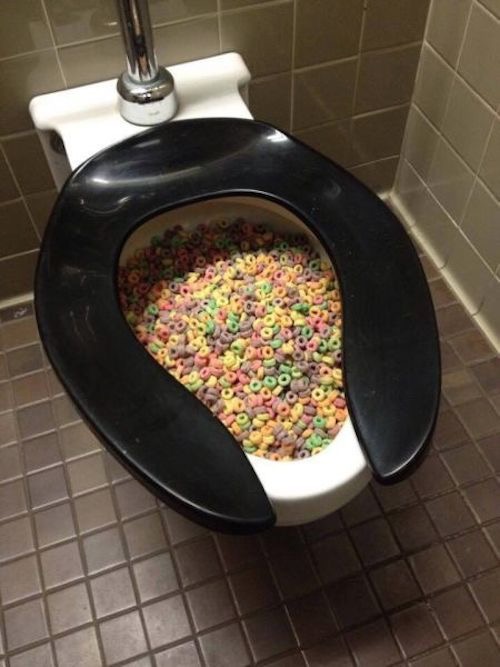Is it Sensible to Flush Food in the Toilet?
Is it Sensible to Flush Food in the Toilet?
Blog Article
Just how do you feel on the subject of Flushing Food Down the Toilet??

Introduction
Many people are typically faced with the dilemma of what to do with food waste, specifically when it concerns leftovers or scraps. One usual concern that arises is whether it's all right to purge food down the bathroom. In this post, we'll delve into the reasons why people may consider flushing food, the effects of doing so, and alternate methods for appropriate disposal.
Reasons why individuals might think about purging food
Absence of understanding
Some people might not be aware of the prospective harm caused by flushing food down the bathroom. They may erroneously think that it's a harmless technique.
Benefit
Flushing food down the bathroom might look like a quick and easy service to throwing away undesirable scraps, especially when there's no close-by trash bin offered.
Laziness
In some cases, individuals may simply select to flush food out of sheer negligence, without thinking about the effects of their actions.
Effects of flushing food down the toilet
Environmental influence
Food waste that winds up in rivers can contribute to pollution and injury water environments. In addition, the water utilized to purge food can strain water sources.
Pipes problems
Purging food can result in stopped up pipes and drains pipes, creating pricey plumbing repair services and hassles.
Sorts of food that should not be purged
Fibrous foods
Foods with coarse appearances such as celery or corn husks can obtain tangled in pipelines and create blockages.
Starchy foods
Starchy foods like pasta and rice can soak up water and swell, leading to obstructions in pipes.
Oils and fats
Greasy foods like bacon or food preparation oils ought to never ever be flushed down the commode as they can solidify and create clogs.
Appropriate disposal approaches for food waste
Utilizing a garbage disposal
For homes outfitted with garbage disposals, food scraps can be ground up and flushed via the plumbing system. Nevertheless, not all foods appropriate for disposal in this way.
Recycling
Particular food product packaging products can be recycled, lowering waste and minimizing ecological influence.
Composting
Composting is an environment-friendly method to deal with food waste. Organic products can be composted and made use of to improve soil for horticulture.
The relevance of appropriate waste management
Lowering environmental injury
Appropriate waste monitoring techniques, such as composting and recycling, aid lessen pollution and preserve natural deposits for future generations.
Safeguarding plumbing systems
By avoiding the practice of flushing food down the bathroom, home owners can prevent pricey pipes repairs and preserve the integrity of their pipes systems.
Final thought
To conclude, while it may be tempting to flush food down the toilet for convenience, it is necessary to understand the possible consequences of this activity. By adopting appropriate waste administration methods and dealing with food waste properly, people can add to much healthier pipes systems and a cleaner environment for all.
FLUSH FOOD DOWN THE TOILET?
FLUSHING FOOD CAN CAUSE BLOCKED DRAINS IN YOUR HOME
All of the plumbing fixtures in your home are connected to the same sewer pipe outside of your home. This outdoor sewer pipe is responsible for transporting all the wastewater from your home to the Council sewer mains. Even small pieces of food that go down the kitchen sink can cause problems for your sewer. It should therefore be obvious that flushing larger bits of food, such as meat, risks a clog in either the toilet itself or the sewer pipes. Flushing greasy food is even more problematic because oil coagulates when it cools, coating the interior lining of your pipes.
THE TOILET IS NOT A BIN
Food isn’t the only thing that people shouldn’t be flushing down the toilet. People use the toilet to dispose of all kinds of things such as tampons, makeup wipes, dental floss, kitty litter and even underwear. Water goes to great lengths to educate residents about the high costs and stress placed on wastewater treatment systems simply from people flushing the wrong stuff down the toilet. It costs taxpayers millions of dollars each year, and homeowners thousands in blocked drain repairs.
FLUSHING FOOD IS A WASTE OF WATER
Flushing food is a waste of our most precious resource - water. In June this year Level 1 water restrictions were introduced to protect water supply from drought conditions. Much of New South Wales continues to be affected by prolonged drought with recent figures revealing up to 97 per cent of the state remains in drought. Depending on whether you have a single or dual flush toilet, every single flush uses between five and 11 litres of water. In the current climate this is a huge amount of water to be wasting on flushing food that should be placed in the bin (or better yet, the compost).
https://www.jabplumbingsolutions.com.au/blog/can-you-flush-food-down-the-toilet

Do you like reading about Flushing Food Down the Toilet?? Make a remark further down. We would be glad to know your thoughts about this posting. We are looking forward that you visit us again in the future. Enjoyed our piece? Please share it. Let other people discover it. Thanks a lot for your time spent reading it.
This Post Report this page